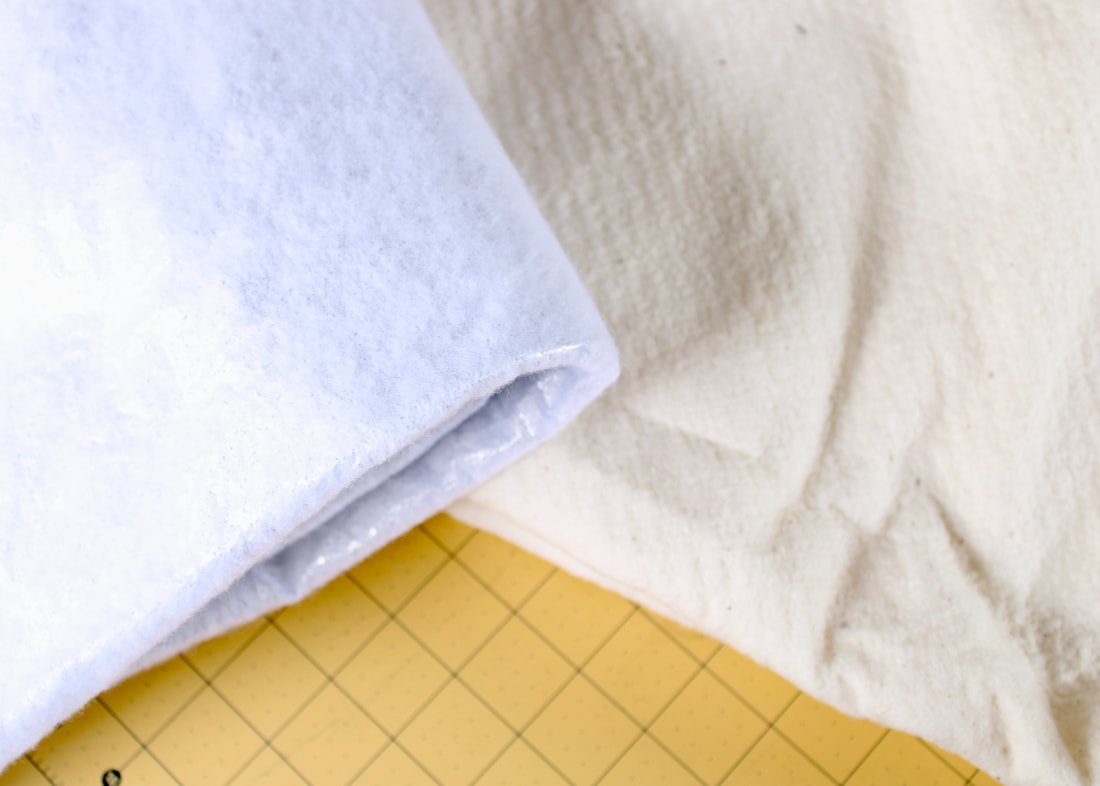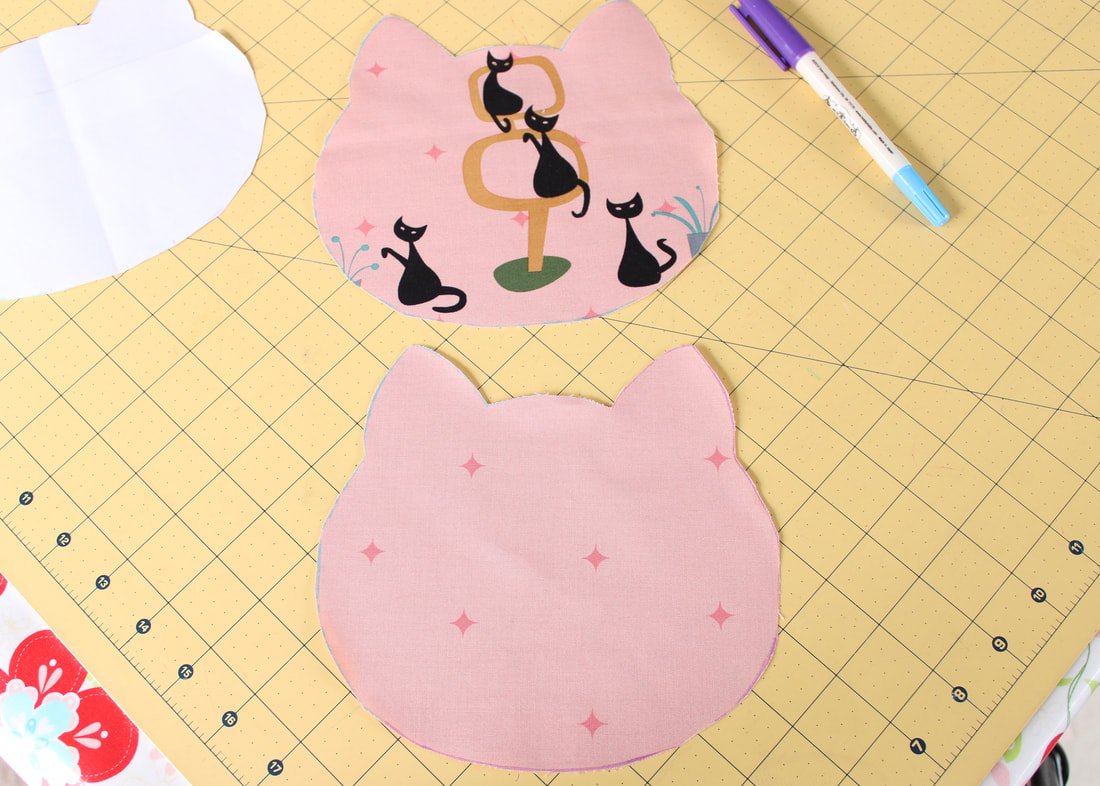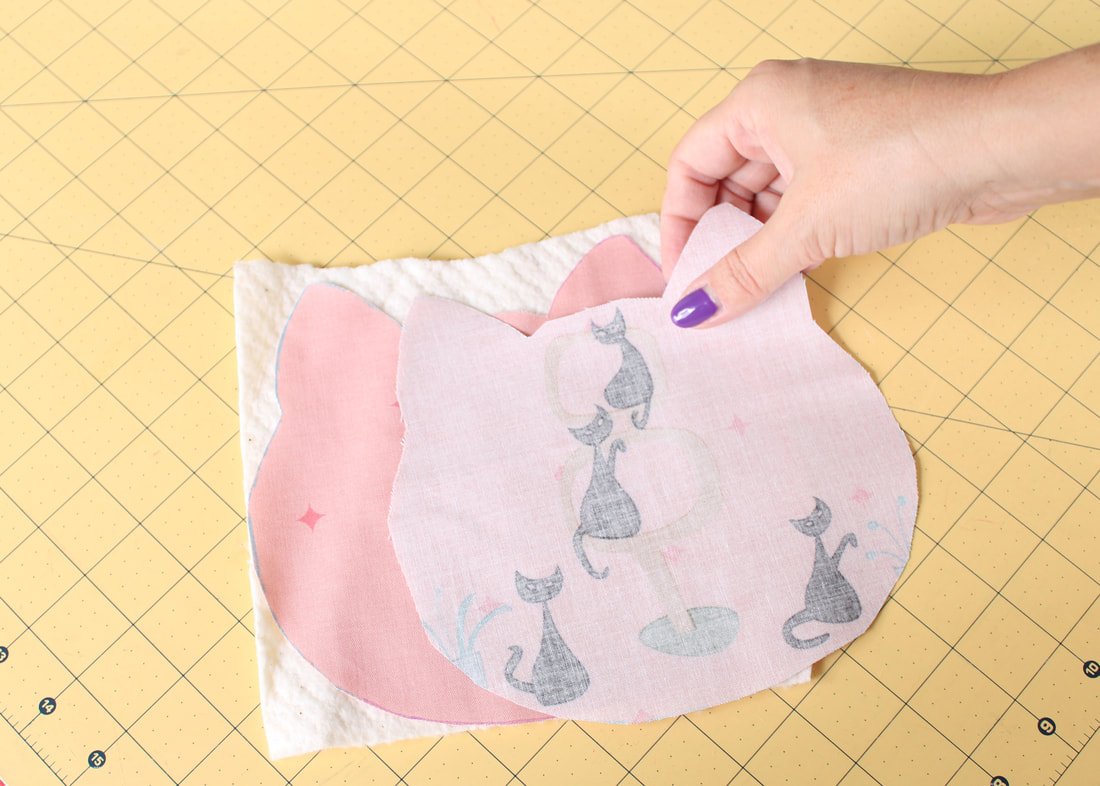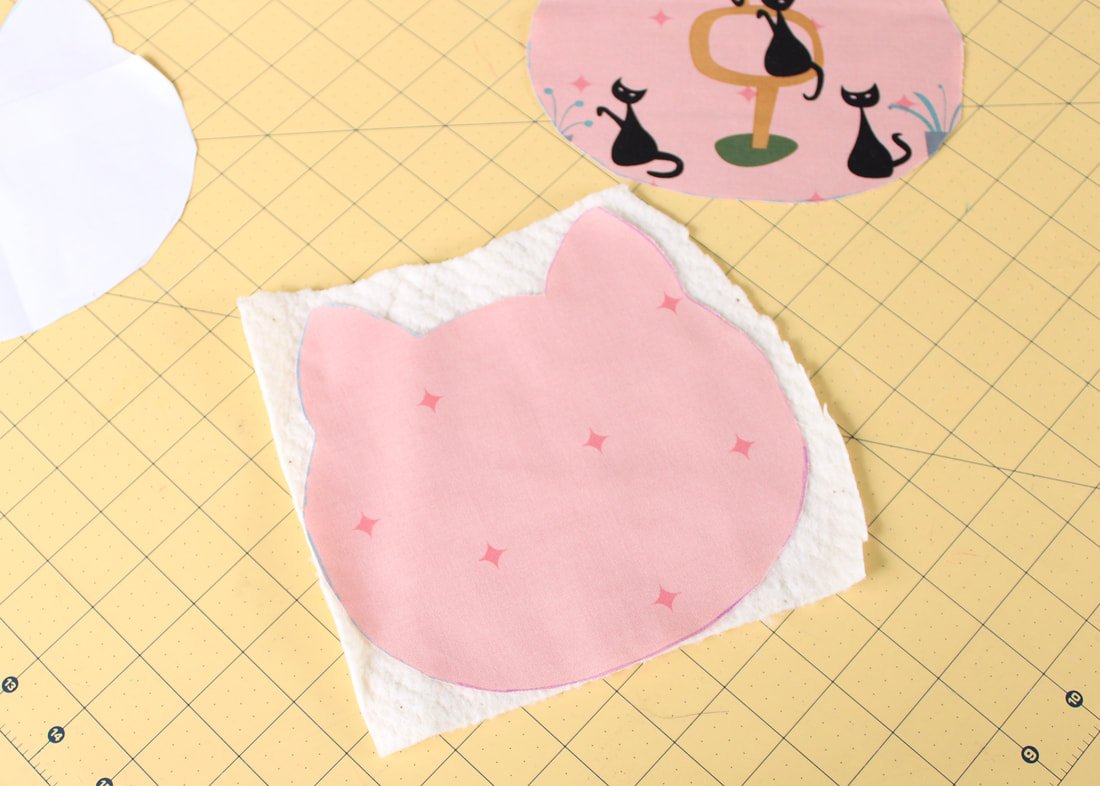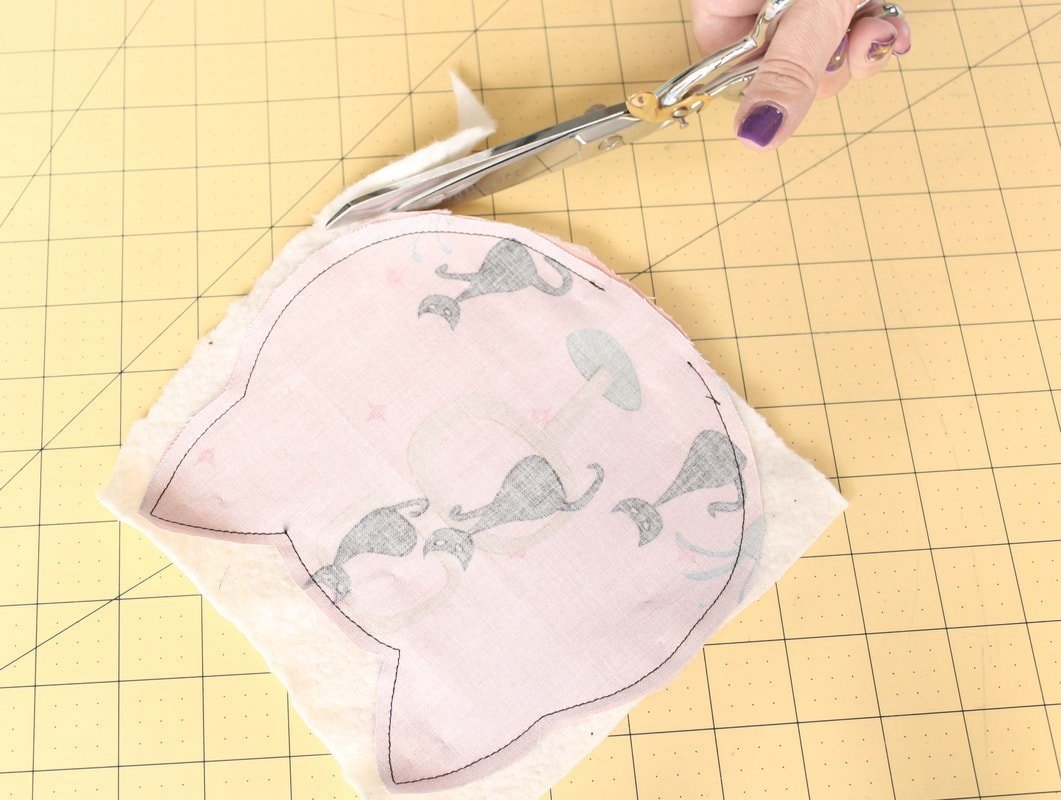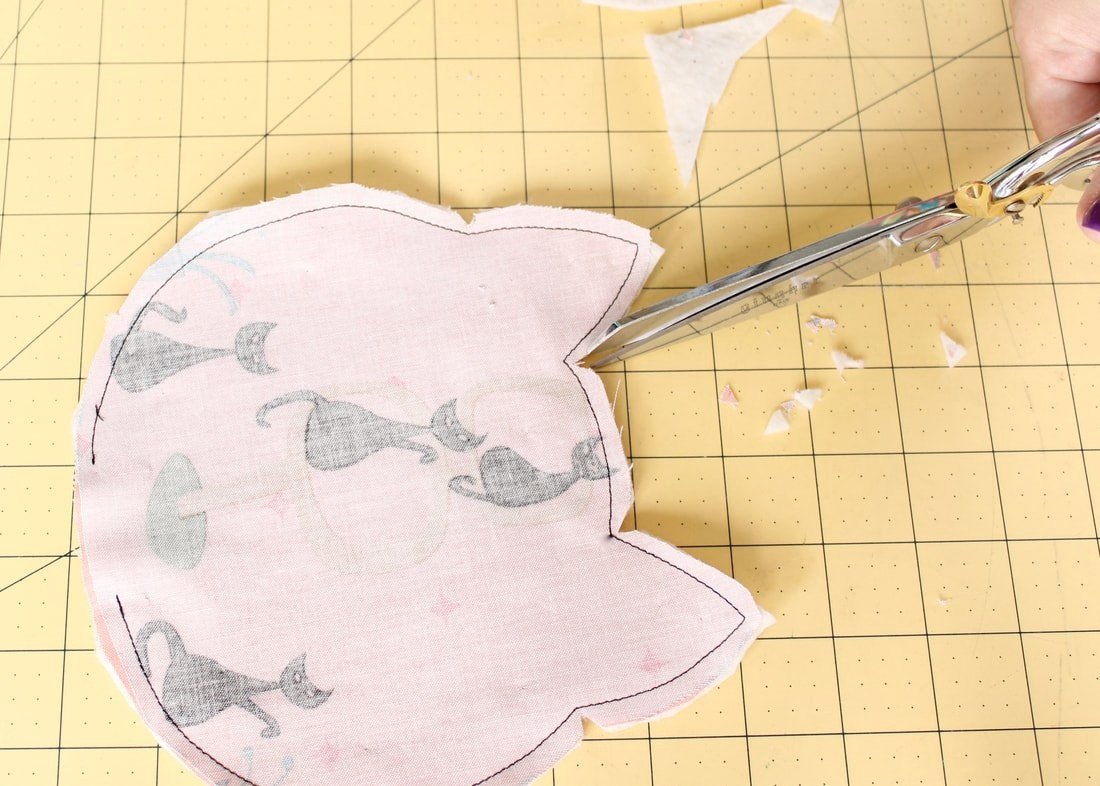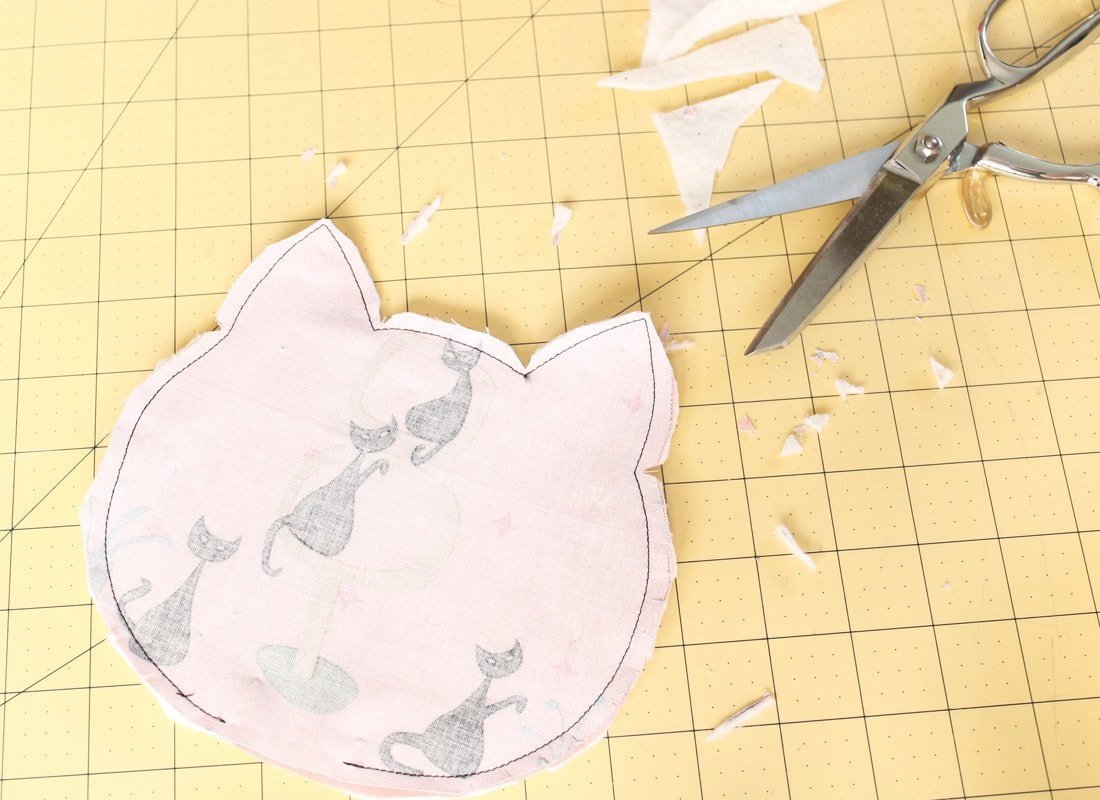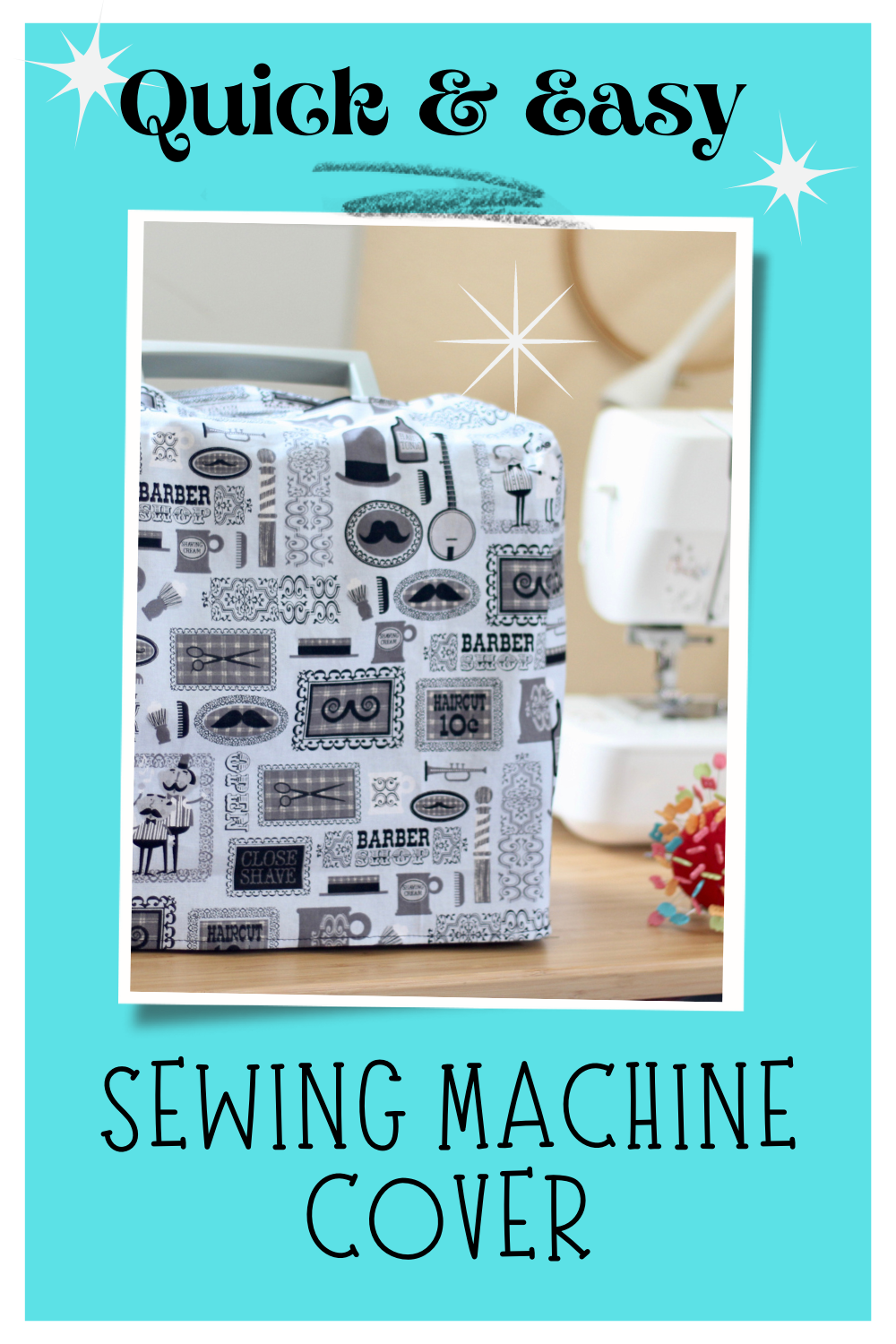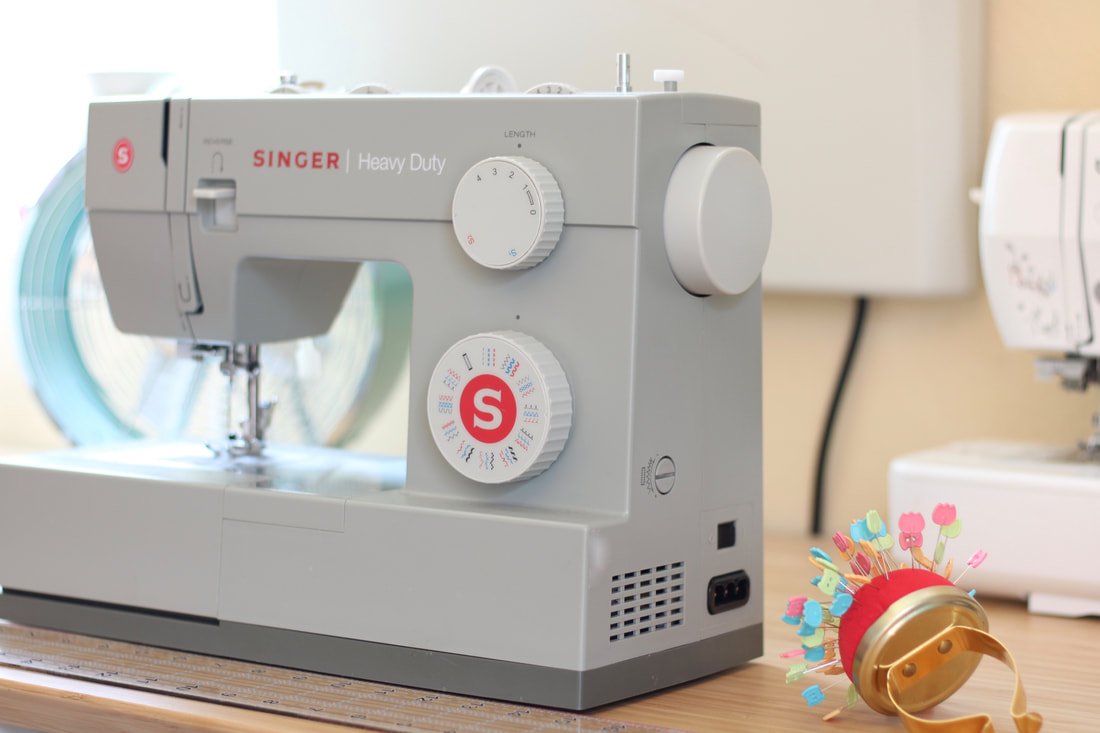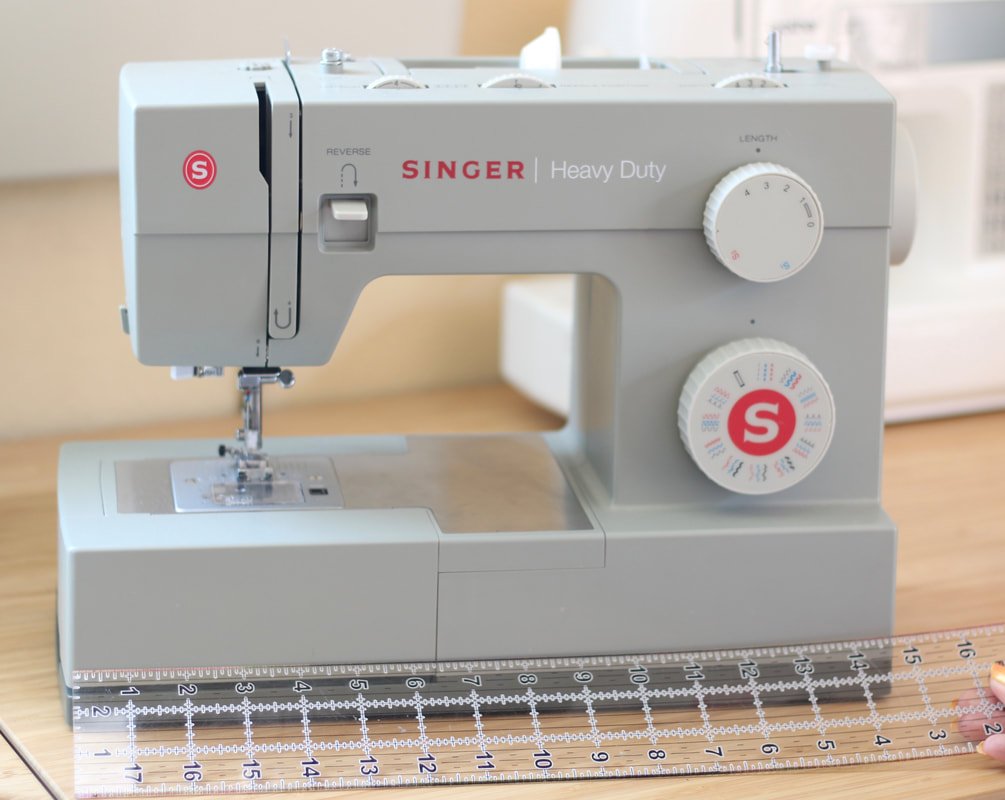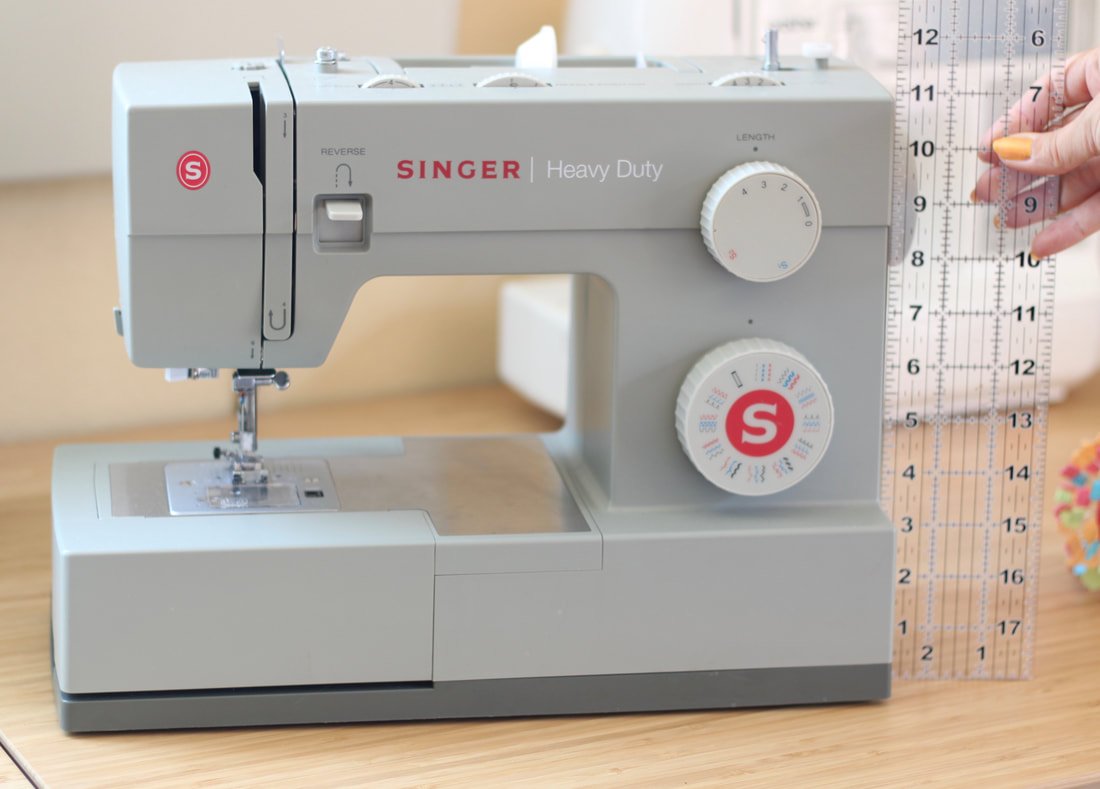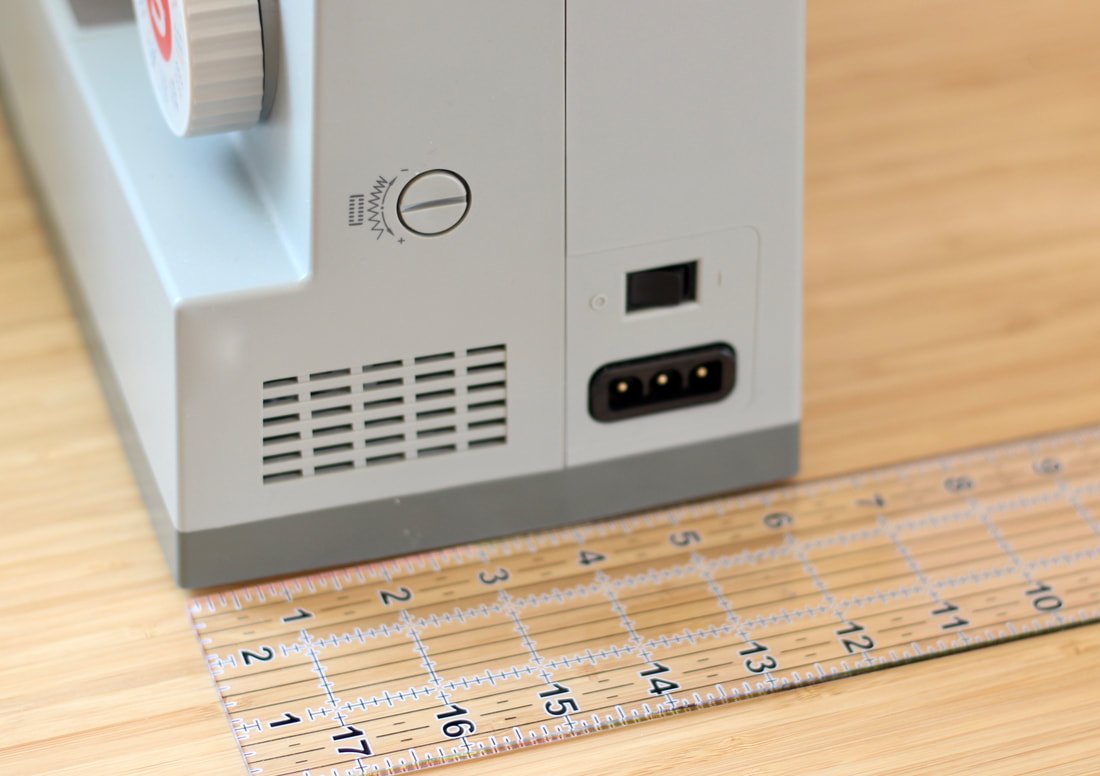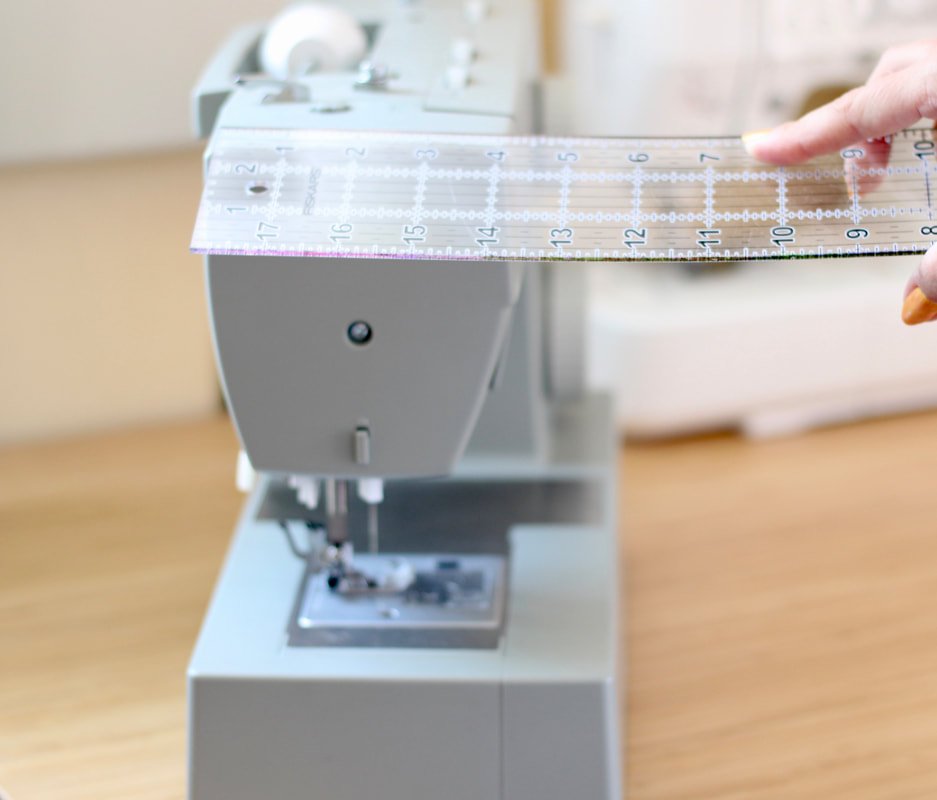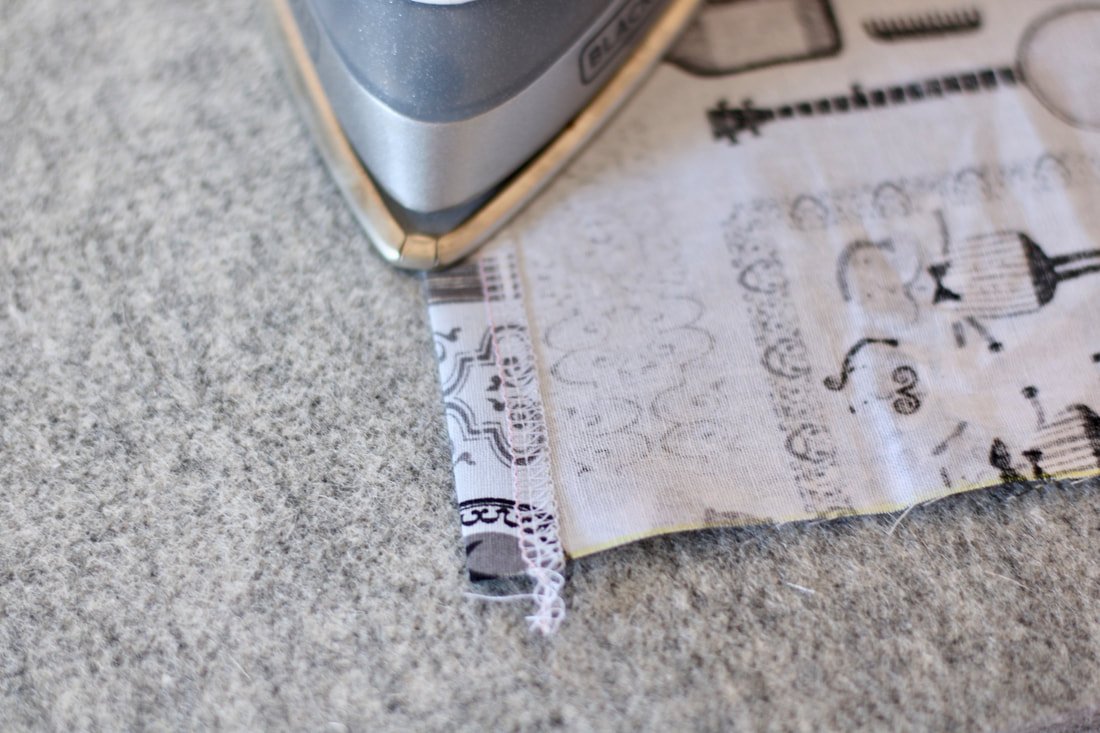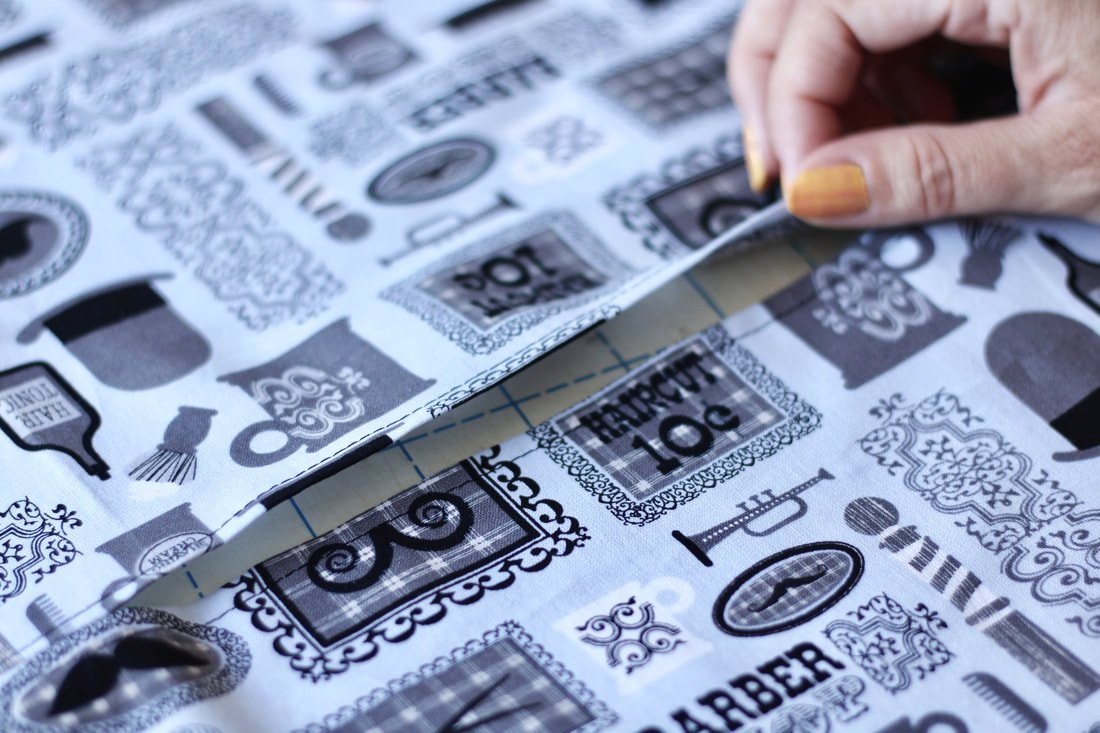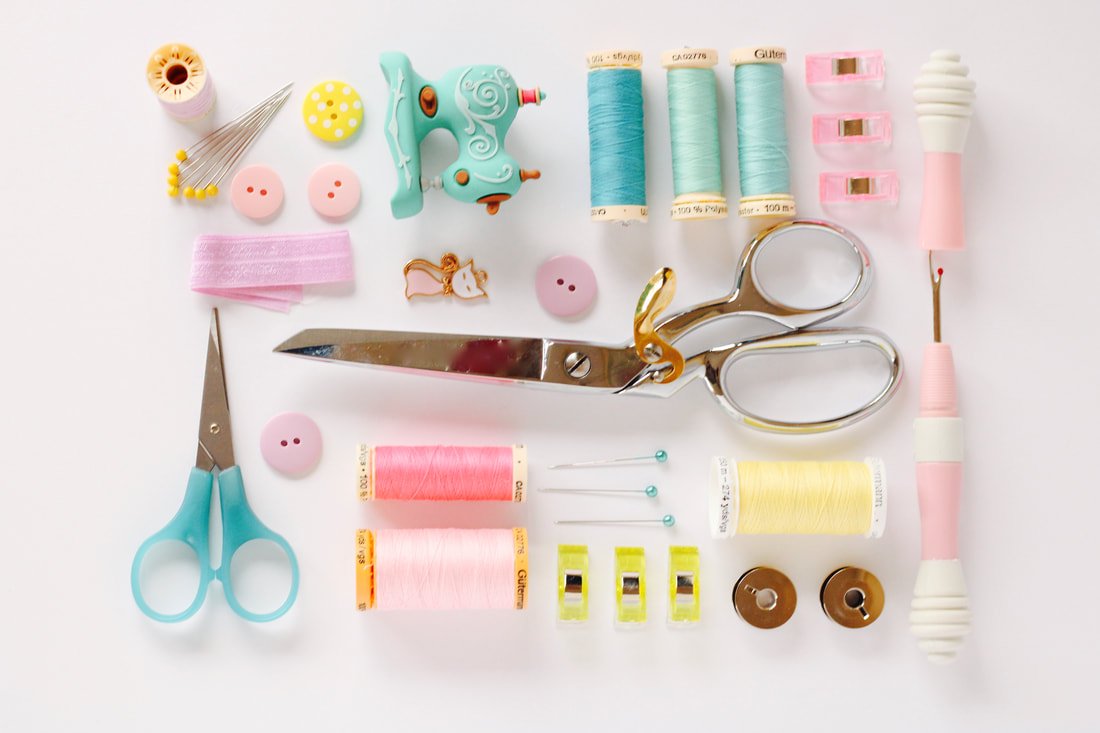
Pattern Reviews, Sewing Hacks, Tips & Free Patterns
Sewing Blog Besties
A Photographer Skirt
Sew an easy skirt. No zipper needed! It has an elastic back and flat front. It’s cute and comfortable. Add some pockets too!
Camera fabric for a new skirt.
If you’re anything like me, you have many hobbies and interests. I love sewing, gardening, farm animal-ing, photography, cooking (sometimes, ha!), and Netflixing. As a photographer who sews, I have the skills to make my clothing in exciting prints that speak to me.
Novelty prints are my favorite. So, when I saw this fun camera fabric at Hobby Lobby, I bought the remainder of the bolt. I planned on making a skirt and hoped I had enough left for a few other small projects. Hint: I’m going to make another bag using leftover pieces.
This tutorial is super simple. We’re going to make a gathered skirt. It requires 2 yards or less of fabric. Since “Cove Cove,” aka the 2020 pandemonium, I’ve gained a few pounds. Elastic waistbands are my best friend, so I made the waistband with elastic in the back. The front has a flat waistband. Business in the front, party in the back!
Interested in making one? Let’s go.
What You Need:
2 yards of fabric
1” Elastic, measuring half the width of your waist, plus 1” for overlap
Matching thread
Sewing machine
Scissors, a chalk marker, ruler, etc.
Pins or clips
Safety pin to thread the elastic
Measuring tape
Pencil and paper to create your pattern
Scrap fabric for pockets
Pocket pattern piece
Pockets
If you don’t want to self-draft a pocket piece, here are a couple of easy ways to find a pocket pattern.
Grab a pocket piece from another sewing pattern you already own. Most skirt, dress, and pants patterns usually have a pocket. Check your envelopes to find an in-seam pocket pattern piece.
Look online for a free PDF one. A quick Pinterest or Google search will give you lots of patterns.
Cut 4 pieces from some matching or contrasting fabric scraps. Sometimes it’s fun to have colorful pockets. Use solids, patterns, polka dots, or cut animal print fabric for your pockets. Make it fun!
Pocket pattern and yellow fabric for the pockets.
Skirt Instructions
Measure the length from your waist to your leg (calf, above, or below your knee) that you want your skirt, then add 2-4” for a hem. I wanted to make mine 20” long. So, I cut my fabric 22” long. I used quilting cotton that was roughly 44” wide. I cut my fabric 22” by 44”.
Cut 2. This will be your front and back.
My waist is 35”, so this created a lightly gathered skirt. If your waist is larger, you will have less gathers. If you like lots of gathers you might need more fabric. If your waist is smaller, you will have more gathers.
Pinning the pockets to the front of the skirt.
I measured 1.5” down from the top and made a notch. This is where you want your pocket to be placed. This is customizable, depending on how tall or short you are.
Pin the pocket RST to the front of the skirt. Then sew using a 1/4”-3/8” seam allowance. Press open. Repeat on the other side.
Do the same for the back skirt piece. You will now have two pieces that look like rectangles with floppy elephant ears.
Place front and back pieces RST, and pin the side seam starting at the bottom, going around the pockets, and up to the top. Sew in that order, sewing around pocket pieces. Use a 5/8” Seam allowance.
As an extra precaution, I do a few extra back-and-forth stitches at the corners where I pivot for my pockets.
I chose yellow pockets to match the branding for my photography business. I usually wear this skirt when I have a vendor show or meet a new client. It’s a fun conversation piece.
Sew around the pinned pocket. It will get pressed and tuck away nicely within the skirt seam.
You inseam pocket should look something like the one below. Yes, I used the selvedge of my fabric and we all know that’s a big no-no. Shhh, don’t tell anyone.
The pocket is tucked inside nice and neat.
Secret yellow pocket.
Gathering your skirt.
Sew 2 rows of stitching along the top with a 5-7mm length. Pull to gather the skirt. Go slowly so you don’t break a thread.
Waistband Fun
Time to sew the waistband. This part is a little more tricky than a regular waistband. You’re going to gather the back with a piece of elastic while leaving the front flat. It gives a nice look while adding comfort.
Cut the front waistband strip half your waist measurement, plus 1” for seam allowance. If your waist is 30”, cut the piece 16”.15”+1”=16”. Use a 1/2” seam allowance for the waistband. I like easy math.
I made my waistband 2.5” tall, this is completely customizable for you and what you want.
Example: Cut 2 front strips 16” wide by 2.5” tall.
Add interfacing to one strip, this will be the outer piece.
Sew right sides together, along the top long edge, only. Press open.
Making your waistband.
For the back waistband piece, you’ll cut 2 strips the same height, 2.5” (or your preferred height) by the fabric width measurement.
I cut mine 2.5” by 35”. The width can be fudged a little here, it’ll be gathered anyway. Sew along the top with the 2 pieces facing RST, just like you did with the front waistband. Press open.
Pin and sew the short sides of the waistband pieces together, creating a super-duper long loop. Press the seams open.
Pin the waistband to the skirt gathers, starting at the side seams.
Pin your waistband strip to the skirt along the gathered top.
Pin at the side seams first.
Then, pin the front waistband piece along the front skirt.
Fold the back piece in half and mark it with chalk. Pin that to the center back of the skirt. This can be finicky because you’re pinning 2 gathered pieces to each other, go slow and it’ll work out. Use lots of pins or clips.
You can hand sew the waistband- which is the correct way but, hand sewing is not my favorite thing. I turn the edge under on the inner waistband and pin it from the outside, making sure I catch the seam.
Pin from the outside and remove the pins as you stitch in the ditch.
Tricky Part of the Waistband
Stitch in the ditch when sewing the waistband. This means keeping your needle in the area where the waistband and skirt meet up. It’s a hidden stitch.
Make sure to leave a 2” gap in the side seams for inserting your elastic.
Use a bodkin or safety pin to insert your elastic.
Use a safety pin or bodkin to insert your elastic into the waistband. Insert through one open side seam.
When you get to the other side, stitch over the side seam to lock the elastic in place. Repeat on the other side. Gather back fabric evenly, then stitch to close the openings.
You are “locking” the elastic in place by sewing over it, on the side seams. The elastic will only go in the back of the skirt.
The front looks nice and flat, the back is gathered for comfort.
Closer look at the gathered back waistband.
Front waistband is flat.
The hem is the easy part. Fold your hem up however much you want1-2”, then press, then fold up again 1-2”. Pin, and stitch using a 3-3.5mm stitch length. I chose to do a shorter hem here, but I usually do a 2” hem.
I love my skirt! I made this to wear when I have events for my photography business. I usually pair it with a yellow top to match my branding. It’s simply perfect!
What do you think? Do you plan on making a skirt with elastic in the back? I call it a mullet skirt. Business in the front, comfort in the back. LOL
Happy sewing,
Annette
Back of the skirt hanging on my dressform.
Front of the skirt on the dressform.
Cat Mug Rug
Sew a cat-shaped mug rug. These make perfect gifts for parents, neighbors, teachers, and anyone else who drinks warm drinks. Great scrap-busting sewing project and a free sewing pattern. Sew cat-themed things for the home.
The leaves are starting to fall, the mornings are crisp, and evenings are getting chilly. It's almost sweater weather! If you love fall, I bet you dream of warm mugs filled with cocoa, hot tea, fancy coffees, or hot toddies. I know I am. Cue the cat mat, rug mug, or coffee coaster; you decide the name of it. I want to share a cute kitty mug rug pattern with you all. Here is an easy, beginner-friendly sewing project you can whip up in an hour. It’s a great scrap-buster project too.
A mug rug will help protect your kitchen table from the heat of a hot beverage. With the holidays approaching, these would even make perfect gifts. Neighbors, moms, uncles, friends, and teachers will love them. They can also be great for kids. Add a hot cocoa packet inside a cute mug for an easy holiday gift.
I kept this post simple and short. Less time reading, more time for sewing. Let's go!
Supply List
Large scraps of cotton fabric, or 2 fat quarters
Batting. You can use quilting batting, Insul-Bright, Wrap N Zap, or fusible fleece
Clips or pins
Sewing machine
Air soluble pen
Scissors
Cup of something hot to place onto the mug after it's sewn :)
The finished size is approximately 6.5" wide by 6.25" tall.
Cut and Trace the Pattern
Print and cut out the PDF pattern with non-fabric scissors.
Place the pattern onto the fabric and trace it with an air-soluble pen or other marking tool. Transfer the markings onto your fabric. Trace and cut 2 pieces of fabric.
Cut out a piece of batting. (I prefer to cut it larger than the fabric because it will shift during sewing).
Pin Layers Together
Place the batting onto the table. Then, place the wrong side of the fabric onto the batting. Take the second fabric and place it right side facing down. You'll have a fabric sandwich now. The 2 pieces of cotton will be facing right sides together. Pin or clip the 3 layers together.
Batting, fabric, fabric.
A note on batting: if you use Insul-bright or fleece, do not put your mug rug in the microwave. Fleece is polyester and will melt. Insul-bright has metal and will spark. If you plan on putting your coaster in the microwave, use cotton quilting batting or Wrap n Zap only.
Sew it Together
You'll sew the mug rug using a 1/4" seam allowance. Start sewing at one of the marked spots on the bottom, don't forget to backstitch. Sew all the way around. Go slow around the cat ears, it can get tight. Backstitch when you get to the other marking. You should have a small opening for turning out.
Clip your threads.
Sew from one bottom end, backstitch, then sew around to the other side, backstitch. Leave a gap open for turning.
Clip Curves and Turn Out
Trim away the excess batting.
Clip the curves and trim the corners. Clip the sides and top of the cat head. Cut tiny triangles into the inner curved areas near the ears. This makes them turn out nicely without any bunching.
Grab a chopstick or blunt pencil to poke out corners and seams. Press nice and flat.
Tip: Use the chopstick in one hand to push the seam out, while using the iron in the other hand to press. This is the same pressing method I use to make my wide Rockabilly headbands.
Use a chopstick to push out corners.
Topstitch around entire mug rug to close the opening.
Finishing Up
Give the whole mat a good press. Top stitch the opening closed, be sure to backstitch at the beginning and end. Or, you can top stitch around the whole coaster. Stitch using 1/8"- 1/4" from the edge.
You're all done! Now go brew a cup of something warm and tasty, and sip in style. Make one for each holiday or day of the week.
Extra Tips:
Make a few different sets of these to give as gifts. Wrap them with themed ribbon or twine. Add a fun, informative tag to let the recipient know what they are. Using themed fabric can make it extra personal. If your sister-in-law is a nurse, use medical fabric. If someone is a book lover, use their favorite movie or some comic book fabric.
Add some rick rack to the front or seam for added color.
Piece together and quilt to use up tiny fabric scraps.
Add piping to the outside. Go slow around the cat ears because it can get really tight on the inside corners.
Use 2 different fabrics to make it reversible.
A word of caution, these mats are made for beverages that are usually dark in color and can stain. I wouldn't recommend using white or really light-colored fabrics. Fabrics that are dark or heavily patterned work the best. Think of fabrics that will hide stains easily.
Wash your cat coasters with cool water, gentle cycle, tumble dry low, or air dry. Give them a good press if needed. I keep one near the coffee pot as a spoon rest, too.
Cheers to cat mug rugs.
Enjoy the pattern! And, enjoy sipping a cup of something delicious while you use this cute cat mug rug on your desk or table.
As always, thanks for stopping by, and happy sewing!
Annette
DIY Easy Sewing Machine Cover
Sew a cover for your sewing machine. Free pattern that’s easy and customizable. Sewing machine tutorial pattern on how to sew a cover.
Is your sewing machine looking a tad boring? If it's a newer sewing machine, the answer is probably yes. The newer ones lack style and color. If it's a vintage machine, the answer is probably no. It's already gorgeous and full of vintage flair! Either way, let's add some new life to your machine with a dust cover. They're easy to sew and you can make one for all of your machines.
Back in the early pandemic days, mask-making was a big thing in this house and my husband bought himself a Singer machine. I'm a Brother fan through and through but, he liked the Singer's grey color. Of course, it's been sitting for over a year, untouched, and needs a little makeover. It's going to get a new fabric cover!
Let's make an easy sewing machine cover. You'll learn how to get the measurements and sew one up in an hour. Covers add fun to your sewing space and they keep your machine protected as well. Dust be gone! Speaking of dust begone, we just changed our AC filters. YIKES! They were long overdue. This is a friendly reminder to change your filters if you have an AC. ;) Go now, I'll wait.
Supply List
1/2 yard of fabric. Cotton, vinyl, canvas, denim, use whatever you want here.
Matching thread
Sewing notions: scissors, a marking tool, pins, etc.
Ruler
Serger for raw edges, or use a zigzag stitch if your machine has it
Sewing machine
Grab some paper, a pen, and a ruler. You can use a tape measure but, the hard ruler makes it a little easier to get an exact measurement.
Measure all the sides of your machine.
Time for Math, (insert tears here).
Now it's time for some math. I don't do math so, hopefully, I explain this correctly.
You'll be using a 1/2" seam allowance. So, you'll add 1" to each measurement number. (Each seam takes half of that inch.)
My machine is 12" tall by 15" wide. So, I'll add 1" to both of the measurements.
12 + 1 = 13. 15 + 1 = 16. So, my final rectangle will be 13x16. But, we're not done yet.
Next, you'll add 2" to your height. This will allow the front and back to "roll over" the top.
The new measurement will be 14x16. These will be my front and back pieces. Cut 2.
* If your machine is extra deep, you may need to add more than 2" to the top height.
The sides will need 1" added to your measurements.
My side measurements are 6.5" by 4". Add 1" to each and they'll be 7.5" by 5". *If your top is narrower than your bottom, use your ruler to connect the top and bottom lines to form a trapezoid (a pyramid with the top cut off). Cut 2 mirrored. There might be a left and right side due to the angles. ;)
I hope I explained this correctly. Math is not my strong suit, so send me a message or leave a comment if you need help. I'll try my best to help, but no promises. ;) LOL Others might offer help in the comment section too.
Bonus tip
Cut out your 4 fabric pieces. You should have 2 sides and 2 front/back pieces.
This is where you can have fun and make it your own. Cut out four different colored fabrics or use different fabrics for the sides. You could piece together different fabrics to make a quilted look, or add some embroidery to the front. The possibilities are endless.
OPTIONAL:
If you do add embroidery or make a quilted one, you might want to line yours.
In this case, sew 2 covers the same size, pin right sides together, and sew along the bottom edge, leaving a 3" gap for turning out. Top stitch the bottom to close the gap and you'll have the embroidery stitches/quilting seams enclosed.
Using the rotary cutter and mat for the rectangles.
Sewing Time
Start by serging or zigzagging along the top edge of the front and back pieces only.
Fold the serged edge down 1/2", then press. Topstitch 1/4" away from the edge. You're going to create a slit opening for your handle. *You can skip this part if you want. But, it's nice to have access to the handle when taking the machine to the repair shop or moving it to another spot in your sewing space.
Place both pieces RST (right sides together) and pin 2-3" from the sides, leaving the middle unpinned. You may need to adjust this measurement according to your machine. Sew from the side edge to the pins, only. Don't forget to backstitch.
The middle will be left open for the handle to pop out of.
Take a side piece, and fold it in half to find the center top. Make a little snip or mark with a pen. Do the same to the other side piece.
Next, pin the side piece to one front/back Right sides together, by starting at the top. Put a few pins at the top, then go down to the bottom and start pinning upwards from there. This ensures your hem matches up. Next, you'll want to ease the curve of your corners. This may get wonky but, pin as well as you can. It doesn't need to be perfect.
Sew, using a 1/2" seam allowance.
It may be helpful to sew from one end upwards as far as you can go. Then, sew from the other end up and around the curve. Puckers might happen, but this way felt easier to me.
After one side is sewn, try it on the machine. Check the fit. Is it too long? Will the other side fit properly? Does it hang like a baggy bag? If there are any issues, fix them now.
If it's too big, make the seam allowance larger. (Use 3/4"-1")
If it's too small, unpick it and make the seam allowance smaller. (Use 1/4" instead)
If it's too long, trim away the excess or make a deeper hem. (Make a 1" hem)
Luckily the sewing Gods were on my side and I was fortunate for mine to fit perfectly. Yay, math was on my side, for once.
If it fits perfectly, move on to pin and sew the other side piece. Go about it the same way you did with the last side piece. After it's sewn, give the seams a good press. Slip it over your machine and admire it for a few seconds.
You're almost done. The hem is all that's left to do.
Serge or zigzag around the bottom edge. Fold up 1/2" and press. Topstitch and you're done.
If the bottom is too short because math is hard, just add a strip of ribbon or pom pom trim. It'll look like you did it on purpose. ;)
Easiest hem ever, serged edge and folded over once.
My husbands sewing machine will be dust free now.
Hole for the carrying handle.
Ta-da! Now go give your sewing machine some flair and keep it dust-free.
If you make one for your machine, tag me on Instagram @sewingtothemoon. I'd love to see what you create. Now, I am off to sew a new cover for my serger.
Happy sewing,
Annette



















